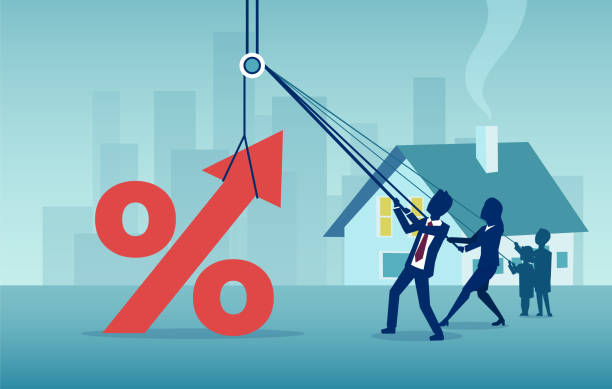Rent-to-own contracts are an alternative to traditional home loans. Both buyers and sellers can benefit from these arrangements, but it’s essential that everyone understands the risks. Such arrangements, at the outset, are much like traditional leases landlords and tenants might sign. However, the contract also gives the renter exclusive rights to purchase the home at a specified point in the future. A portion of the money paid upfront and as part of the established monthly rent also goes toward the purchase price.
Any two parties can enter into such an arrangement, but they sometimes are used as part of housing programs designed to establish affordable housing or revitalize neighborhoods.
Price-to-Rent Ratio
A price-to-rent ratio measures the relative affordability of purchasing vs. renting in a housing market. It is calculated by dividing the average price of homes sold during a specific time period in a particular market by 12 months’ worth of the average monthly rent in that same market.
For example, the average price of homes sold in the U.S. during the third quarter of 2019 was $382,700,2 while the average monthly rent paid during that same time nationwide was $1,471.3 So, to get the price-to-rent ratio, you would divide 382,700 by 17,652 (1,471 multiplied by 12) and come up with 21.68. The higher the ratio, the more favorable the market is for renting. The lower the ratio, the more favorable the market is for buying.
Of course, average home prices and rents vary from market to market, so the national average provides little more than a broad overview. To be accurate, you need to base your calculation on current figures where you are planning to buy or rent. We’ve charted the 10 U.S. cities with the highest and lowest price-to-rent ratios.
Why Buy With Rent to Own?
Rent-to-own programs can be attractive to buyers, especially those who expect to be in a stronger financial position within a few years. Some of the benefits include:
Buy with bad credit: Buyers who cannot qualify for a home loan can start buying a house with a rent-to-own agreement. Over time, they can work on rebuilding their credit scores, and may be able to get a loan once it’s finally time to buy the house.
Lock in a purchase price: In markets with increasing home prices, buyers can get an agreement to buy at today’s price with the purchase taking place several years in the future. Buyers have the option to back out if home prices fall, although whether or not it makes sense financially will depend on how much they have paid under the agreement.
Test drive: Buyers can live in a home before committing to buy the property. As a result, they can learn about issues with the house, nightmare neighbors, and any other problems before it’s too late.
Move less: Buyers who are committed to a home and neighborhood (but unable to buy) can get into a house they’ll eventually buy. This reduces the cost and inconvenience of moving after a few years.
Build equity: Technically, renters do not build equity in the same way homeowners do. However, payments can accumulate and provide a substantial sum to be put toward the home’s purchase.
Why Sell With Rent to Own?
Sellers also can benefit from rent-to-own arrangements:
More buyers: If you’re having trouble attracting buyers, you can market to renters who hope to buy in the future.
Earn income: If you don’t need to sell right away and use the money for another down payment, you can earn rental income while moving toward selling a property.
Higher price: You can ask for a higher sales price when you offer rent to own. People may be willing to pay extra for the opportunity. Renters also get the option to buy the house—which they might never use—but flexibility always costs more.
Invested renter: A potential buyer is more likely to take care of a property and get along with neighbors than a renter with no skin in the game. The renter/buyer is already invested in the property and has an interest in maintaining it.
How It Works
Everything is negotiable in a rent-to-own transaction, also known as a lease option. Both the buyer and seller agree to certain terms, and all the terms can be changed to fit everyone’s needs.
Advice is essential. Review any contract with a real estate attorney. Rent-to-own deals can be especially risky for buyers, and several scams aim to take advantage of people with poor credit and high hopes of buying a home. Even with an honest seller, it’s possible to forfeit a lot of money if things don’t go as planned.
The buyer and seller establish a purchase price for the home in their contract. At some point in the future, the buyer can purchase the home for that price—regardless of what the home is actually worth. When setting the price, a price that’s higher than the current price is not uncommon to account for projected increases in home values. If the home has gone up in value faster than expected, things work out in the buyer’s favor. If the home loses value, the renter can back out of the deal. Buyers usually apply for a mortgage when the time comes to purchase the home.
Buyers typically pay an option premium upfront, often around 5% of the ultimate purchase price. This payment gives the buyer option—but not the obligation—to buy the home at some point in the future. The payment is nonrefundable, but it can be applied to the purchase price.
Contracts also establish the amount of monthly rent, but the renter typically pays a little bit extra each month. The additional amount is usually credited to the final purchase price, so it reduces the amount of money the buyer has to come up with when buying the home. The extra rent is nonrefundable. It compensates the seller for agreeing not to sell the property to anyone else until the agreement with the renter ends. Contracts also stipulate who is responsible for maintenance during the rental period.
Rent-to-Own Pitfalls
Nothing is perfect, and that includes rent-to-own programs. These transactions are complicated, and both buyers and sellers can get some unpleasant surprises.
Risks for Buyers
Some of the things to consider before entering into a rent-to-own agreement include:
Forfeiting money: If you don’t buy the home, you lose all the extra money you paid. Sellers may be tempted to make it difficult or unattractive for you to buy so they can pocket your investment.
Slow progress: You might plan to improve your credit or increase your income so you’ll qualify for a loan when the option ends, but things might not work out as planned.
Less control: You don’t yet own the property, so you don’t have total control over it. Your landlord could stop making mortgage payments and lose the property through foreclosure, or you might not be in charge of decisions about major maintenance items. Likewise, your landlord could lose a judgment or quit paying property taxes and end up with liens on the property. The agreement should address all these scenarios. The landlord isn’t allowed to sell while you have an option on the property, but legal battles are always a major headache and expense.
Falling prices: Home prices might fall, and you might not be able to renegotiate a lower purchase price. Then you’re left with the option of forfeiting all your option money or buying the house. If your lender won’t approve an oversized loan, you’ll need to bring extra money to closing for a downpayment.
Late payments hurt: Depending on your agreement, if you don’t pay rent on time, you may lose the right to purchase, along with all of your extra payments. In some cases, you keep your option, but your extra payment for the month is not counted, and won’t add to the amount you’ve accumulated for eventual purchase.
Home issues: There might be problems with the property you don’t know about until you try to buy it—such as title problems. Treat a rent-to-own purchase like a real purchase. Get an inspection and title search before diving in.
Risks for Sellers
Some of the risks sellers face when entering into rent-to-own agreements include:
No certainty: Your renter might not buy, which means you have to start all over again and find another buyer or renter—but at least you get to keep the extra money.
Slow money: You don’t get a large lump sum, which you might need to purchase your next house.
Missing appreciation: You typically lock in a sales price when you sign a rent-to-own agreement, but home prices might rise faster than you expected. You have to accept this or wait a while to offer the option to buy.
Falling home prices: Home prices might fall, and if your renter does not buy, you would have been better off simply selling the property.
Discovering flaws: Buyers may discover flaws you never knew about and they may decide not to buy. For example, the plumbing might be adequate for a couple, but not a family of five. Although this defect never came up under the previous living arrangement, it is now an issue you’ll have to fix or disclose to future buyers.
Consult our financial advisors to make sure that you will be on the right way, START HERE!


